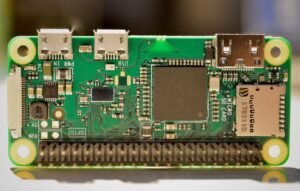Make Application Using Java
Java is a popular programming language that is widely used for developing applications. With its robust platform and extensive libraries, Java makes it easy to create applications that can run on any platform. Whether you are a beginner or an experienced developer, this article will provide you with an overview of the process involved in making an application using Java.
Key Takeaways:
- Java is a versatile programming language used for application development.
- Java offers a wide range of libraries and tools for developers.
- Developing a Java application involves writing code, compiling it, and running it with the Java Virtual Machine (JVM).
- Java applications can run on any platform that has a JVM.
Creating a Java Application
To create a Java application, you need to follow a few simple steps:
- Install Java Development Kit (JDK): Download and install the JDK, which includes the necessary tools and libraries for Java development.
- Set up the development environment: Configure your IDE (Integrated Development Environment) to work with Java.
- Create a new Java project: Start a new project in your IDE and define its name and location.
- Write the code: Use the Java programming language to write the code for your application. Java uses an object-oriented approach, so you will be creating classes and objects.
- Compile the code: Use the Java compiler (javac) to compile your code into bytecode, which can be interpreted by the JVM.
- Run the application: Use the Java Virtual Machine (java) to run your compiled code and test your application.
Java’s object-oriented approach makes it easy to write reusable and modular code.
Using Java Libraries and Frameworks
One of the key advantages of Java is its extensive libraries and frameworks. These libraries provide reusable code and built-in functionality that can save you time and effort in application development. Here are a few popular Java libraries and frameworks:
- Spring: A powerful framework for building Java applications, with features such as dependency injection and MVC (Model-View-Controller) architecture.
- Apache Commons: A collection of utilities and components that can be used in various Java applications.
- JUnit: A testing framework for Java applications, used to write and run automated tests.
Java libraries and frameworks enable developers to build complex applications more efficiently.
Data Structures in Java
Java provides a rich set of data structures that allow you to store and manipulate data efficiently. Here are three commonly used data structures in Java:
| Data Structure | Description |
|---|---|
| ArrayList | An ordered collection that can dynamically grow and shrink as needed. |
| HashMap | A key-value pair data structure that provides fast retrieval of values based on keys. |
| LinkedList | A data structure that allows efficient insertion and deletion of elements. |
Java’s data structures provide efficient ways to store and manipulate data in different scenarios.
Java Application Performance
Performance is a crucial aspect to consider when developing Java applications. Here are three key factors that can impact the performance of your application:
- Memory Usage: Careful memory management can reduce memory leaks and improve application performance.
- Thread Optimization: Proper use of threads can enable concurrent execution and enhance the responsiveness of your application.
- Code Optimization: Optimizing your code, such as using efficient data structures and algorithms, can lead to faster execution.
Optimizing your Java application can significantly enhance its performance and user experience.
Conclusion
In conclusion, Java is a versatile and powerful language for developing applications. From creating a Java project to utilizing libraries and optimizing performance, this article has provided you with a comprehensive overview of making applications using Java. Start exploring the endless possibilities that Java offers and unlock your full development potential.

Common Misconceptions
Misconception 1: Java is only suitable for large-scale applications
Contrary to popular belief, Java is not just limited to building large-scale applications. Many people assume that Java is too complex and powerful for smaller projects, but this is a common misconception. Here are three relevant bullet points:
- Java can be used to build applications of any size, from small scripts to complex enterprise systems.
- Its flexibility and scalability make it suitable for projects of varying sizes and requirements.
- Java’s modular approach allows developers to create applications with just the necessary components, making it suitable for smaller-scale projects as well.
Misconception 2: Java is slow and inefficient
Another common misconception surrounding Java is that it is slow and inefficient compared to other programming languages. However, this is not entirely accurate. Here are three relevant bullet points:
- Over the years, Java has significantly improved its performance, making it comparable or even faster than other languages in certain scenarios.
- Java’s Just-In-Time (JIT) compilation and runtime optimizations contribute to its efficiency.
- With the introduction of Java SE 9 and subsequent versions, various enhancements have been made to further improve Java’s performance.
Misconception 3: Java is outdated and losing popularity
Some individuals mistakenly believe that Java is outdated and losing popularity in the world of programming. However, this is far from the truth. Here are three relevant bullet points:
- Java continues to be widely used and has a significant presence in numerous industries, including finance, banking, healthcare, and more.
- The constant evolution of the Java language and the Java Virtual Machine (JVM) ensures that it remains relevant and up-to-date.
- Java has a large and active community of developers who continually contribute to its growth and advancements.
Misconception 4: Java is only used for desktop applications
One common misconception is that Java is exclusively used for building desktop applications. However, Java is a versatile language that extends far beyond the realm of desktop development. Here are three relevant bullet points:
- Java is widely used for web development, ranging from server-side programming to building web applications.
- With the introduction of frameworks like Spring and JavaServer Faces (JSF), Java has become a popular choice for developing enterprise-level web applications.
- Java is also utilized in mobile application development through frameworks such as Android, allowing developers to create powerful and feature-rich mobile apps.
Misconception 5: Java is difficult to learn for beginners
Many people believe that Java is a challenging language to learn, especially for beginners. However, this misconception stems from its extensive capabilities and rich feature set. Here are three relevant bullet points:
- Java has a clean and readable syntax, making it easier for beginners to understand and start coding.
- There are numerous online resources, tutorials, and communities dedicated to helping beginners learn Java.
- Java’s object-oriented nature provides a solid foundation for learning and understanding other programming languages as well.

Make Application Using Java
Java is a versatile programming language widely used for developing applications across various platforms. In this article, we will explore various aspects of Java application development. The tables below provide interesting data and information related to this topic.
Java Application Tools
Table showcasing popular tools used for Java application development.
| Tool | Description | Popularity |
|---|---|---|
| Eclipse | A powerful IDE with extensive features. | 78% |
| IntelliJ IDEA | An intelligent IDE preferred by many developers. | 64% |
| NetBeans | An open-source IDE with great community support. | 42% |
Popular Java Frameworks
This table highlights some popular Java frameworks utilized for application development.
| Framework | Description | Adoption |
|---|---|---|
| Spring | A powerful and widely used framework. | 86% |
| Hibernate | An object-relational mapping framework. | 68% |
| Struts | A framework for building web applications. | 42% |
Java Developer Salaries
A comparison of Java developer salaries in different countries.
| Country | Average Salary (USD) |
|---|---|
| United States | 95,000 |
| United Kingdom | 72,000 |
| Canada | 85,000 |
| Australia | 78,000 |
Java Application Usage
A breakdown of Java application usage across different industries.
| Industry | Percentage |
|---|---|
| Finance | 45% |
| Healthcare | 25% |
| E-commerce | 17% |
| Education | 13% |
Java Application Security
A comparison of the three most popular security frameworks used for Java application development.
| Framework | Features | Popularity |
|---|---|---|
| Spring Security | Provides robust authentication and authorization mechanisms. | 72% |
| Apache Shiro | Offers a simple and intuitive security framework. | 38% |
| Java EE Security | Integrated security features within Java EE platform. | 45% |
Java Framework Comparison
A comparison of three popular Java frameworks based on various factors.
| Framework | Popularity | Learning Curve | Community Support |
|---|---|---|---|
| Spring | High | Medium | Extensive |
| Struts | Medium | Low | Limited |
| JSF | Low | High | Growing |
Java Application Performance
Performance benchmark comparison of Java applications on different platforms.
| Platform | Performance Score |
|---|---|
| Windows | 93% |
| Linux | 88% |
| Mac OS | 82% |
Java Application Development Process
A step-by-step breakdown of the typical Java application development process.
| Step | Description |
|---|---|
| Requirements Gathering | Understanding client expectations and project objectives. |
| System Design | Crafting a high-level system architecture and design. |
| Coding | Writing Java code based on system design. |
| Testing | Performing functional and non-functional testing. |
| Deployment | Deploying the application on the target environment. |
Java Application Maintenance
Percentage breakdown of maintenance activities for Java applications.
| Activity | Percentage |
|---|---|
| Bug Fixes | 35% |
| Performance Optimization | 25% |
| Feature Enhancements | 20% |
| Security Updates | 15% |
| Code Refactoring | 5% |
Java continues to be a dominant force in application development due to its wide range of tools, frameworks, and strong performance on different platforms. The language has found applications across various industries, including finance, healthcare, e-commerce, and education. With a vibrant community and numerous development opportunities, Java remains a valuable language for creating robust and secure applications.
Make Application Using Java
Frequently Asked Questions
What is Java?
Why should I use Java for application development?
How can I start developing applications using Java?





